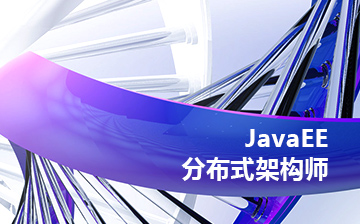-

WEB前端
站-
热门城市 全国站>
-
其他省市
-
-

 400-636-0069
400-636-0069
 沉沙
2018-06-25
来源 :
阅读 1129
评论 0
沉沙
2018-06-25
来源 :
阅读 1129
评论 0
摘要:有时我们会忽略错误处理和堆栈追踪的一些细节,但是这些细节对于写与测试或错误处理相关的库来说是非常有用的。希望阅读本篇文章以后大家有所收获,帮助大家对JavaScript的理解更加深入。
有时我们会忽略错误处理和堆栈追踪的一些细节, 但是这些细节对于写与测试或错误处理相关的库来说是非常有用的.
合理地处理堆栈信息能使你清除无用的数据, 而只专注于有用的数据. 同时, 当更好地理解 Errors 对象及其相关属性之后, 能有助于你更充分地利用 Errors.
(函数的)调用栈是怎么工作的
在谈论错误之前, 先要了解下(函数的)调用栈的原理:
当有一个函数被调用的时候, 它就被压入到堆栈的顶部, 该函数运行完成之后, 又会从堆栈的顶部被移除.
堆栈的数据结构就是后进先出, 以 LIFO (last in, first out) 著称.
例如:
function c() {
console.log('c');
}
function b() {
console.log('b');
c();
}
function a() {
console.log('a');
b();
}
a();在上述的示例中, 当函数 a 运行时, 其会被添加到堆栈的顶部. 然后, 当函数 b 在函数 a 的内部被调用时, 函数 b 会被压入到堆栈的顶部. 当函数 c 在函数 b 的内部被调用时也会被压入到堆栈的顶部.
当函数 c 运行时, 堆栈中就包含了 a, b 和 c(按此顺序).
当函数 c 运行完毕之后, 就会从堆栈的顶部被移除, 然后函数调用的控制流就回到函数 b. 函数 b 运行完之后, 也会从堆栈的顶部被移除, 然后函数调用的控制流就回到函数 a. 最后, 函数 a运行完成之后也会从堆栈的顶部被移除.
为了更好地在demo中演示堆栈的行为, 可以使用 console.trace() 在控制台输出当前的堆栈数据. 同时, 你要以从上至下的顺序阅读输出的堆栈数据.
function c() {
console.log('c');
console.trace();
}
function b() {
console.log('b');
c();
}
function a() {
console.log('a');
b();
}
a();在 Node 的 REPL 模式中运行上述代码会得到如下输出:
Trace at c (repl:3:9) at b (repl:3:1) at a (repl:3:1) at repl:1:1 // <-- For now feel free to ignore anything below this point, these are Node's internals at realRunInThisContextScript (vm.js:22:35) at sigintHandlersWrap (vm.js:98:12) at ContextifyScript.Script.runInThisContext (vm.js:24:12) at REPLServer.defaultEval (repl.js:313:29) at bound (domain.js:280:14) at REPLServer.runBound [as eval] (domain.js:293:12)
正如所看到的, 当从函数 c 中输出时, 堆栈中包含了函数 a, b 以及c.
如果在函数 c 运行完成之后, 在函数 b 中输出当前的堆栈数据, 就会看到函数 c 已经从堆栈的顶部被移除, 此时堆栈中仅包括函数 a 和 b.
function c() {
console.log('c');
}
function b() {
console.log('b');
c();
console.trace();
}
function a() {
console.log('a');
b();
}
正如所看到的, 函数 c 运行完成之后, 已经从堆栈的顶部被移除.
Trace at b (repl:4:9) at a (repl:3:1) at repl:1:1 // <-- For now feel free to ignore anything below this point, these are Node's internals at realRunInThisContextScript (vm.js:22:35) at sigintHandlersWrap (vm.js:98:12) at ContextifyScript.Script.runInThisContext (vm.js:24:12) at REPLServer.defaultEval (repl.js:313:29) at bound (domain.js:280:14) at REPLServer.runBound [as eval] (domain.js:293:12) at REPLServer.onLine (repl.js:513:10)
Error对象和错误处理
当程序运行出现错误时, 通常会抛出一个 Error 对象. Error 对象可以作为用户自定义错误对象继承的原型.
Error.prototype 对象包含如下属性:
· constructor–指向实例的构造函数
· message–错误信息
· name–错误的名字(类型)
上述是 Error.prototype 的标准属性, 此外, 不同的运行环境都有其特定的属性. 在例如 Node, Firefox, Chrome, Edge, IE 10+, Opera 以及 Safari 6+ 这样的环境中, Error 对象具备 stack 属性, 该属性包含了错误的堆栈轨迹. 一个错误实例的堆栈轨迹包含了自构造函数之后的所有堆栈结构.
如果想了解更多关于 Error 对象的特定属性, 可以阅读 MDN 上的这篇文章.
为了抛出一个错误, 必须使用 throw 关键字. 为了 catch 一个抛出的错误, 必须使用 try...catch 包含可能跑出错误的代码. Catch的参数是被跑出的错误实例.
如 Java 一样, JavaScript 也允许在 try/catch 之后使用 finally 关键字. 在处理完错误之后, 可以在finally 语句块作一些清除工作.
在语法上, 你可以使用 try 语句块而其后不必跟着 catch 语句块, 但必须跟着 finally 语句块. 这意味着有三种不同的 try 语句形式:
· try...catch
· try...finally
· try...catch...finally
Try语句内还可以在嵌入 try 语句:
try {
try {
throw new Error('Nested error.'); // The error thrown here will be caught by its own `catch` clause
} catch (nestedErr) {
console.log('Nested catch'); // This runs
}
} catch (err) {
console.log('This will not run.');
}
也可以在 catch 或 finally 中嵌入 try 语句:
try {
throw new Error('First error');
} catch (err) {
console.log('First catch running');
try {
throw new Error('Second error');
} catch (nestedErr) {
console.log('Second catch running.');
}
}try {
console.log('The try block is running...');
} finally {
try {
throw new Error('Error inside finally.');
} catch (err) {
console.log('Caught an error inside the finally block.');
}
}
需要重点说明一下的是在抛出错误时, 可以只抛出一个简单值而不是 Error 对象. 尽管这看起来看酷并且是允许的, 但这并不是一个推荐的做法, 尤其是对于一些需要处理他人代码的库和框架的开发者, 因为没有标准可以参考, 也无法得知会从用户那里得到什么. 你不能信任用户会抛出 Error 对象, 因为他们可能不会这么做, 而是简单的抛出一个字符串或者数值. 这也意味着很难去处理堆栈信息和其它元信息.
例如:
function runWithoutThrowing(func) {
try {
func();
} catch (e) {
console.log('There was an error, but I will not throw it.');
console.log('The error\'s message was: ' + e.message)
}
}
function funcThatThrowsError() {
throw new TypeError('I am a TypeError.');
}
runWithoutThrowing(funcThatThrowsError);如果用户传递给函数 runWithoutThrowing 的参数抛出了一个错误对象, 上面的代码能正常捕获错误. 然后, 如果是抛出一个字符串, 就会碰到一些问题了:
function runWithoutThrowing(func) {
try {
func();
} catch (e) {
console.log('There was an error, but I will not throw it.');
console.log('The error\'s message was: ' + e.message)
}
}
function funcThatThrowsString() {
throw 'I am a String.';
}
runWithoutThrowing(funcThatThrowsString);现在第二个 console.log 会输出undefined. 这看起来不是很重要, 但如果你需要确保 Error对象有一个特定的属性或者用另一种方式来处理 Error 对象的特定属性(例如 Chai的throws断言的做法), 你就得做大量的工作来确保程序的正确运行.
同时, 如果抛出的不是 Error 对象, 也就获取不到 stack 属性.
Errors 也可以被作为其它对象, 你也不必抛出它们, 这也是为什么大多数回调函数把 Errors 作为第一个参数的原因. 例如:
const fs = require('fs');
fs.readdir('/example/i-do-not-exist', function callback(err, dirs) {
if (err instanceof Error) {
// `readdir` will throw an error because that directory does not exist
// We will now be able to use the error object passed by it in our callback function
console.log('Error Message: ' + err.message);
console.log('See? We can use Errors without using try statements.');
} else {
console.log(dirs);
}
});最后, Error 对象也可以用于 rejected promise, 这使得很容易处理 rejected promise:
new Promise(function(resolve, reject) {
reject(new Error('The promise was rejected.'));
}).then(function() {
console.log('I am an error.');
}).catch(function(err) {
if (err instanceof Error) {
console.log('The promise was rejected with an error.');
console.log('Error Message: ' + err.message);
}
});
处理堆栈
这一节是针对支持 Error.captureStackTrace的运行环境, 例如Nodejs.
Error.captureStackTrace 的第一个参数是 object, 第二个可选参数是一个 function.Error.captureStackTrace 会捕获堆栈信息, 并在第一个参数中创建 stack 属性来存储捕获到的堆栈信息. 如果提供了第二个参数, 该函数将作为堆栈调用的终点. 因此, 捕获到的堆栈信息将只显示该函数调用之前的信息.
用下面的两个demo来解释一下. 第一个, 仅将捕获到的堆栈信息存于一个普通的对象之中:
const myObj = {};
function c() {
}
function b() {
// Here we will store the current stack trace into myObj
Error.captureStackTrace(myObj);
c();
}
function a() {
b();
}
// First we will call these functions
a();
// Now let's see what is the stack trace stored into myObj.stack
console.log(myObj.stack);
// This will print the following stack to the console:
// at b (repl:3:7) <-- Since it was called inside B, the B call is the last entry in the stack
// at a (repl:2:1)
// at repl:1:1 <-- Node internals below this line
// at realRunInThisContextScript (vm.js:22:35)
// at sigintHandlersWrap (vm.js:98:12)
// at ContextifyScript.Script.runInThisContext (vm.js:24:12)
// at REPLServer.defaultEval (repl.js:313:29)
// at bound (domain.js:280:14)
// at REPLServer.runBound [as eval] (domain.js:293:12)
// at REPLServer.onLine (repl.js:513:10)
从上面的示例可以看出, 首先调用函数 a(被压入堆栈), 然后在 a 里面调用函数 b(被压入堆栈且在a之上), 然后在 b 中捕获到当前的堆栈信息, 并将其存储到 myObj 中. 所以, 在控制台输出的堆栈信息中仅包含了 a和 b 的调用信息.
现在, 我们给 Error.captureStackTrace 传递一个函数作为第二个参数, 看下输出信息:
const myObj = {};
function d() {
// Here we will store the current stack trace into myObj
// This time we will hide all the frames after `b` and `b` itself
Error.captureStackTrace(myObj, b);
}
function c() {
d();
}
function b() {
c();
}
function a() {
b();
}
// First we will call these functions
a();
// Now let's see what is the stack trace stored into myObj.stack
console.log(myObj.stack);
// This will print the following stack to the console:
// at a (repl:2:1) <-- As you can see here we only get frames before `b` was called
// at repl:1:1 <-- Node internals below this line
// at realRunInThisContextScript (vm.js:22:35)
// at sigintHandlersWrap (vm.js:98:12)
// at ContextifyScript.Script.runInThisContext (vm.js:24:12)
// at REPLServer.defaultEval (repl.js:313:29)
// at bound (domain.js:280:14)
// at REPLServer.runBound [as eval] (domain.js:293:12)
// at REPLServer.onLine (repl.js:513:10)
// at emitOne (events.js:101:20)
当将函数 b 作为第二个参数传给 Error.captureStackTraceFunction 时, 输出的堆栈就只包含了函数 b 调用之前的信息(尽管 Error.captureStackTraceFunction 是在函数 d 中调用的), 这也就是为什么只在控制台输出了 a. 这样处理方式的好处就是用来隐藏一些与用户无关的内部实现细节.
本文由职坐标整理并发布,了解更多内容,请关注职坐标WEB前端JavaScript频道!
 喜欢 | 0
喜欢 | 0
 不喜欢 | 0
不喜欢 | 0



您输入的评论内容中包含违禁敏感词
我知道了

请输入正确的手机号码
请输入正确的验证码
您今天的短信下发次数太多了,明天再试试吧!
我们会在第一时间安排职业规划师联系您!
您也可以联系我们的职业规划师咨询:

版权所有 职坐标-一站式IT培训就业服务领导者 沪ICP备13042190号-4
上海海同信息科技有限公司 Copyright ©2015 www.zhizuobiao.com,All Rights Reserved.
 沪公网安备 31011502005948号
沪公网安备 31011502005948号